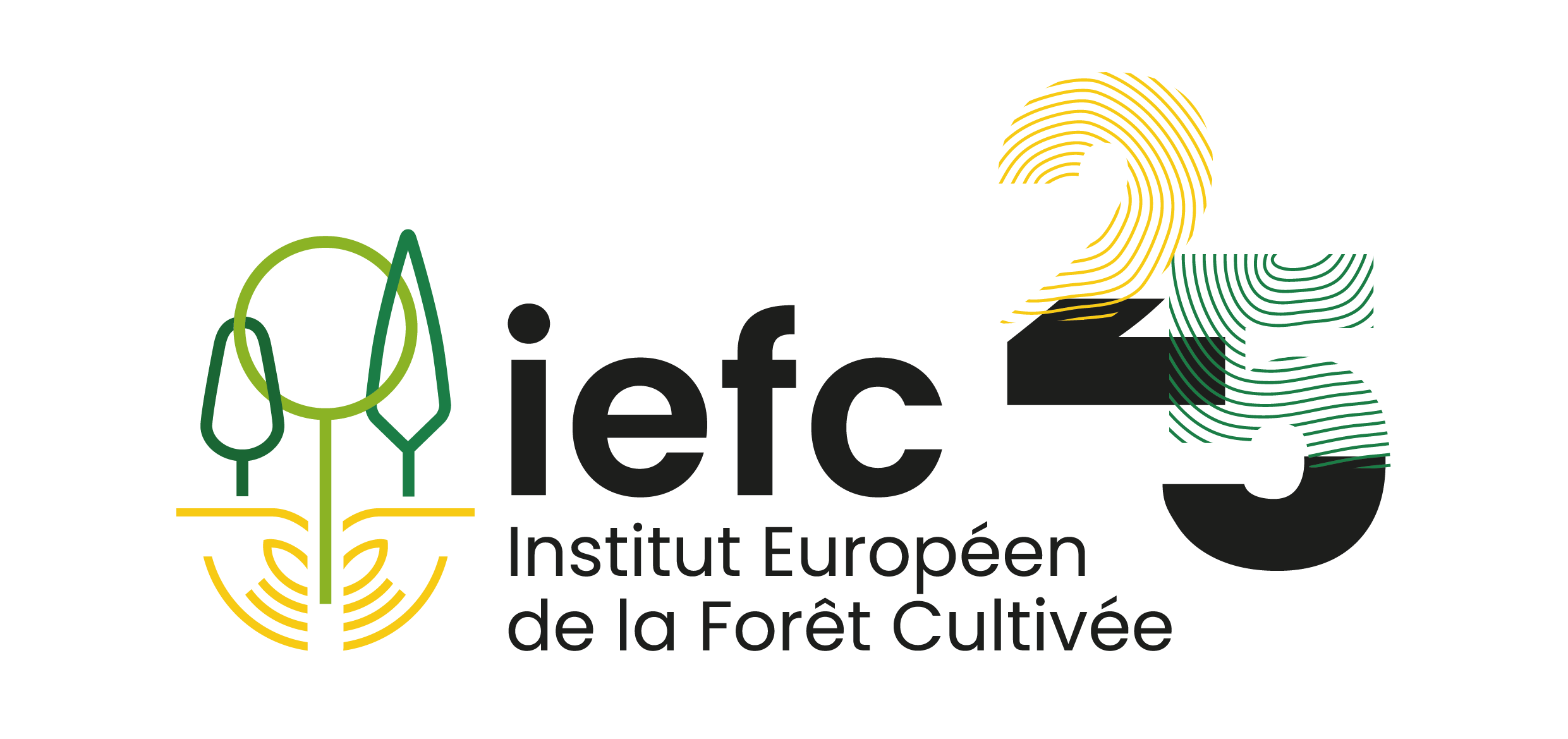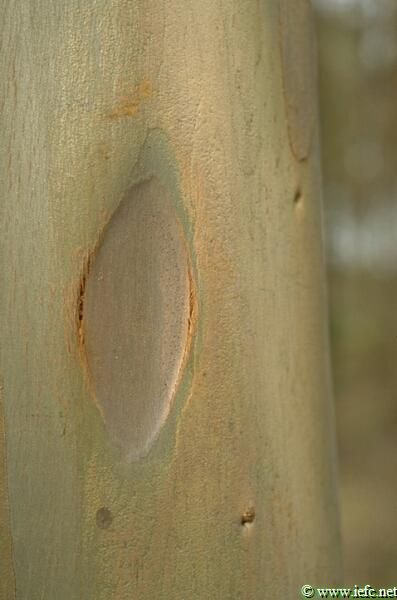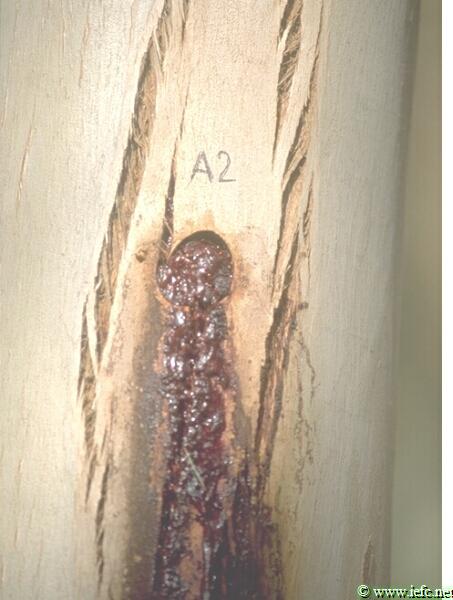Botryosphaeria canker and dieback
Botryosphaeria dothidea (Ascomycota, Dothideales).
synonyms : Botryosphaeria berengeriana Botryosphaeria ribis
Asexual stage: Dothoriella sp.
Host tree
Eucalyptus, Pinus, Cupressus and several fruit trees.
Identification
- Presence of cankers on stem and branches and die-back (death of tree tops).
- Canker evolution: first sign is the presence of a necrotic lesion in the bark (Photo 1). Usually the bark cracks around the lesion and a black reddish kino (excretion of polyphenols) exudes (Photo 2), after which the bark detaches and exposes the canker (Photo 3).
- Symptoms can usually be seen in autumn.
Damage
- Progressive dieback : death of tree tops due to the presence of canker(s) in the upper part of the stem and/or in the higher located branches (Photo 4).
- Severe attacks can affect growth and may cause tree death.
- Soft pockets of kino develop underneath the bark rendering wood unacceptable for saw timber production.
- Lateral branches and the stem can break at the site of the cankers.
Biology
- B. dothidea can colonise healthy trees without exhibiting virulence (latent phase) until environmental or physiological conditions favours its virulence.
- The spores, most abundant in warm and moist conditions, penetrate the bark through small cracks and holes caused by insects or mechanical actions.
- The combined action of biotic agents (insect pests like the Eucalyptus longhorned borer (Phoracantha semipunctata) or the Eucalyptus snout beetle (Gonipterus scutellatus) and/or abiotic factors (drought, winds, storms, unusual frost conditions, etc.) causes the weakening of the tree and favours the development of B. dothidea.
Risk factors
- Trees in regions with incidence of P. semipunctata.
- Trees under considerable stress (drought, winds, storms, unusual frost conditions, etc.).
Distribution
Portugal, GalicePest management
Preventive measurements
- Plant eucalyptus species or clones that are well adapted to the site conditions.
- Plant disease tolerant species or clones, when available.
- Keep the plants growing as vigorously as possible. Avoid heavy fertilisation and severe pruning of established plants.
- Mulch plants yearly and provide adequate water during extended dry periods (in floriculture or ornamental trees).
- Prune out and destroy dead branches.
- Remove and eliminate severely infected trees.
Curative control
- Effective chemical control is not available.




